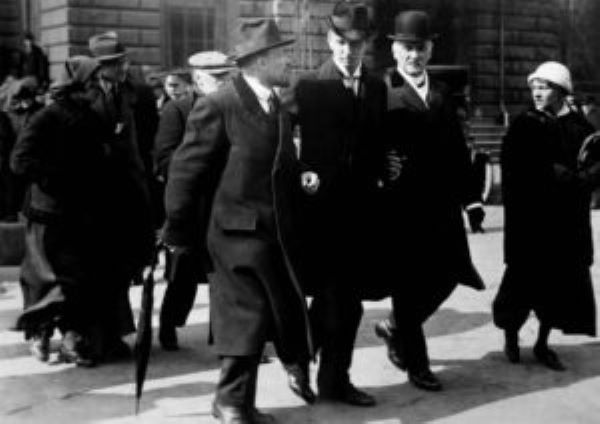
Stockholm Central – Klara streets – hotel Reisen – PUB
It was a matter of time. The Swedish socialists were on the verge of a revolution in the spring of 1917. Gustaf V was forced to abdicate in the same way as Tsar Nikolai – after the March hunger demonstrations and revolt in Petrograd, as Saint Petersburg was then called.
- Click route
- Quick Guide
- Malnutrition and blockades in World War II led to food shortages and rationing in Sweden. A month after the Russian conquest, hunger protesters marched in a number of Swedish cities. The hunger marches continued throughout April, peaking on April 22 with 10,000 protesters outside the Riksdag building. Five thousand factory workers marched down Vasagatan a week later in protest against the price of milk.
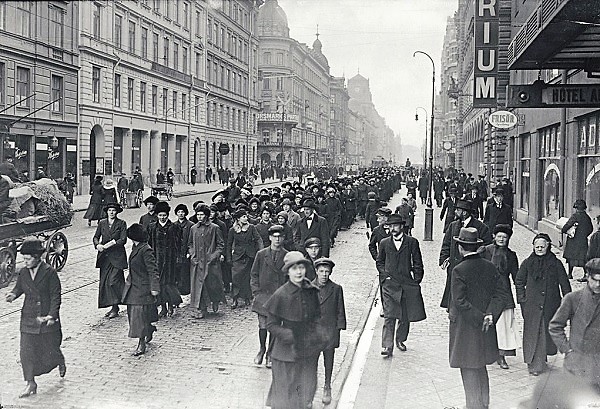
Stockholm Central Station at ten o’clock on April 13, 1917
- Stockholm Central Station at ten o’clock on April 13, 1917
- The journey
- Vasagatan Central Plan
- Vattugatan / Klara Södra Kyrkogata
- Vattugatan/Klara Östra Kyrkogata
- Queen’s Palace Hotel Regina
- Hötorget
- Departure from Stockholm Central
Shortly after ten, the Malmö train steams onto the track. Out pours about thirty shaggy-haired men and a few women. They seem stiff-legged and unwashed after four days on wooden benches in two sealed carriages through Germany. Despite their equal ideals, Lenin and his closest associates sit in second class.
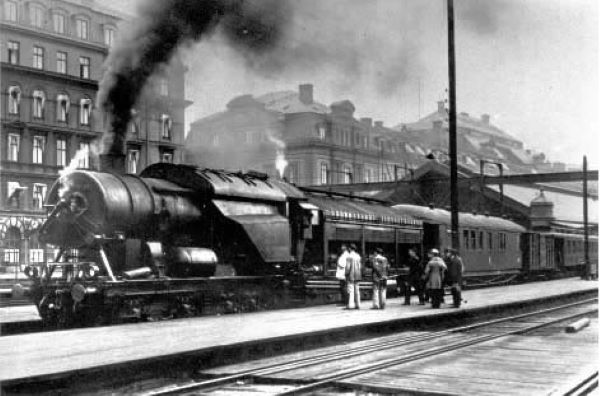
A couple of men from the secret police are seen on the platform. Lenin turns away journalists who want to interview him. He wants to pass through Russian passport control between Haparanda and Tornio unnoticed. Journalist Sven Backlund, from the Social-Demokraten, also gets a njet. He is sent there by Hjalmar Branting, whose non-revolutionary politics Lenin does not like.
The trip is paid for by the German emperor. The Germans believe that enemy Russia will make peace if Lenin can get there. With the hope of a revolt more revolutionary than the liberals and Mensheviks’ seizure of power in March.
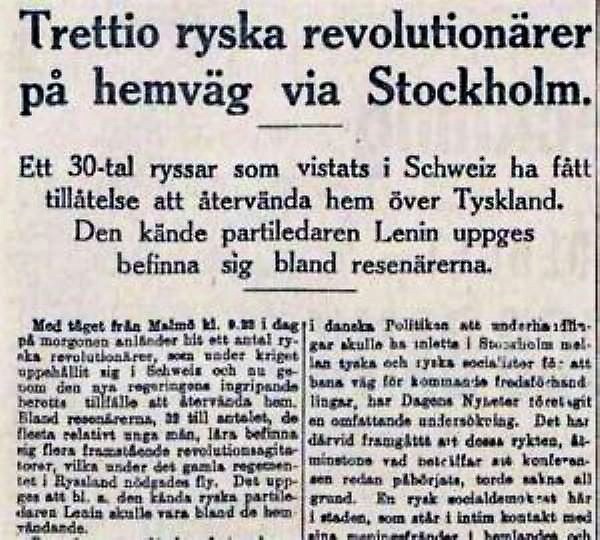
The Russians seem abrupt and moody. The customs in Switzerland took the food boxes so they have been begging for sandwiches at the stations. They have slept badly with their clothes on during the journey in Sweden. They were also disturbed by a group of journalists who got on outside Södertälje. Fresh air relieved the seasickness on the ferry between Sassnitz and Trelleborg. There the young socialist Otto Grimlund joined to keep Lenin company during the journey to Stockholm.
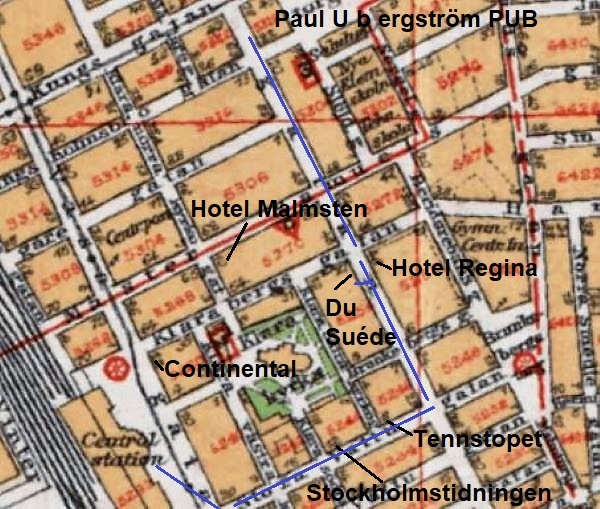
The journey
Polish-born Yakov Fürstenberg , offered a smorgasbord at the Shanghai Hotel Savoy. The buffet with moose steak and real caviar was gone in a quarter of an hour. But Lenin forgot to eat, fully occupied with learning about socialism in Sweden from the Bolshevik Yakov Fürstenberg . After export business in Copenhagen and then in Stockholm, Fürstenberg, also with the names Ganezy and Hanecki, was at the cash register and helped Lenin financially. (Stalin executed him in 1937).
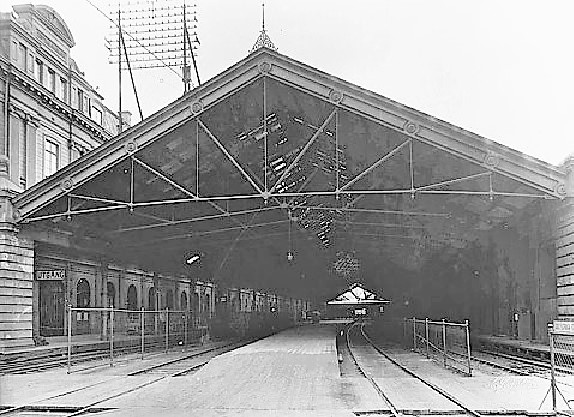
The train arrives early in the morning in the large hall (which ten years later was replaced by the large central hall we see today).
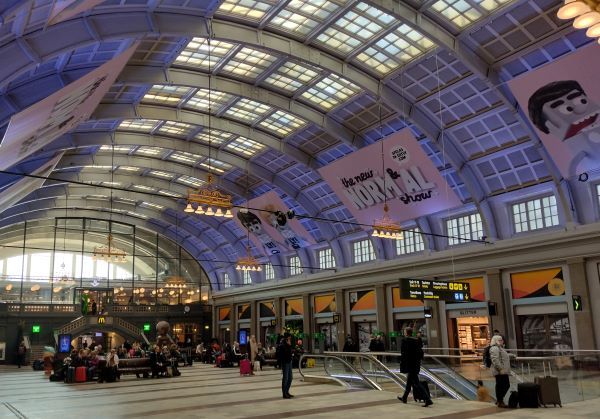
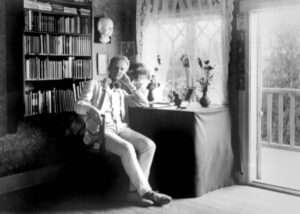
The group is welcomed by journalist Ture Nerman. (In May he is expelled from the Swedish Social Democratic Labour Party and together with Zäta Hägglund forms the Swedish Social Democratic Left Party, later known as the Communist Party.) Hägglund is unable to attend the meeting at the central station.
The leader of the Social Democrats, Hjalmar Branting, is missing from the welcoming committee. He is traveling by train from Haparanda, on his way home from Petrograd/St. Petersburg. There he has made contacts with the revolutionary government that Lenin is planning to overthrow.
Vasagatan Central Plan
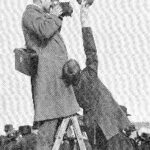
On this grey morning outside Stockholm Central Station, Lenin and the courtship of photographer Axel Malmström meet . He is sent by Social-Demokraten, the newspaper that for a couple of decades had Hjalmar Branting as editor-in-chief until 1917. It is rumored that it is the member of parliament and editor Fredrik Ström who tipped off Malmström. Ström follows the party from the station to the Hotel Regina, where he has booked ten rooms.
At the forefront is a fifty-year-old man with a goatee and a wool coat that is too big. Ture Nerman’s elegance breaks away from the shaggy company. He and Lenin have known each other since a socialist conference in the Alpine village of Zimmerwald in 1915. Lenin and his wife Nadja had lived in exile in Switzerland until they boarded the train to Sweden.

Next to Nerman, Stockholm Mayor Carl Lindhagen listens. It is uncertain whether the lady on the right is Lenin’s wife Nadezhda Krupskaya . The beautiful woman behind him is his mistress Inessa Armand , a revolutionary feminist who, after fleeing Russia, lived in the same exile as Lenin. Or rather, a former mistress, for Lenin’s love life is complicated.
If the picture is to be believed, Lenin and his courtiers are heading north on Centralplan, perhaps also to see the Hotel Continental on the corner of Vasagatan / Klarabergsgatan, where Lenin is probing for a peace negotiation with Russian and German socialists.
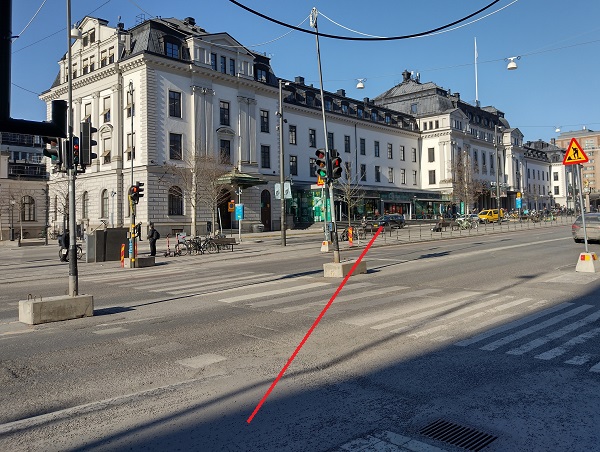
But in the next picture they pass the tram tracks south on Vasagatan. This is revealed by the Handelsbanken sign at the Stora Vattugatan intersection. Today the street runs with a bridge over Vasagatan. Nowadays a dark back street through Klara and another traffic lane in a tunnel.
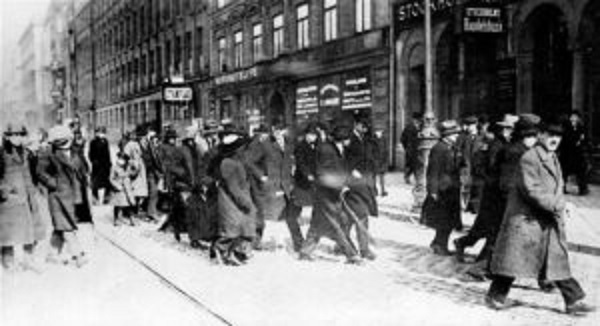
Almost all the male fellow travelers were executed by Stalin. Yakov Fürstenberg, who was Lenin’s fixer both in Switzerland and on the train trip to Saint Petersburg, was shot during the Great Purge of 1937. Fellow traveler Grigory Zinoviev was shot in the neck the same year. Karl Radek , who interrupted the trip and handled Lenin’s affairs in Stockholm, suffered the same fate in Siberia two years later. See interactive map 1913 .
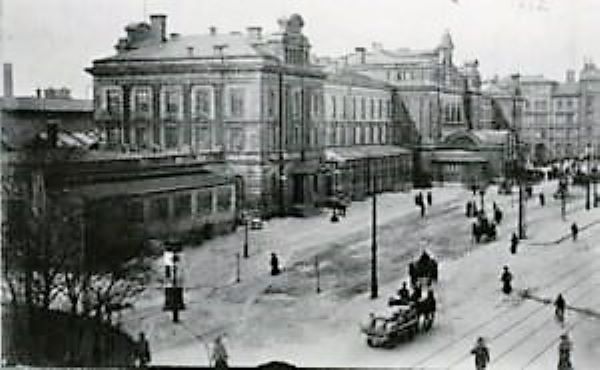
Vattugatan / Klara Södra Kyrkogata
Why this detour through the newspaper district south of Klara Church? Perhaps because Lenin did not want to be seen unnecessarily in Stockholm. He and his followers wanted to sneak through the Russian passport control in Haparanda / Torneå without being noticed.
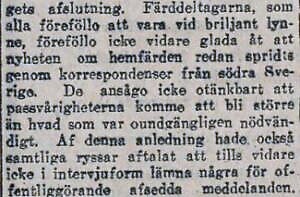
Or did the Swedish hosts want to get as much press attention as possible? Russian acquaintances were a feather in the cap in the fight against the moderate socialists under Hjalmar Branting. On May 13, the party split and the left wing formed the Swedish Social Democratic Left Party, which later became the Communist Party.
In Klara, the newspaper printing houses were close to the railway. Journalists filled the taverns. From Vattugatan, the Russians looked north on Klara Västra Kyrkogata with Dagens Nyheter at number six. The only memory of the newspapers is the clock on the street corner.
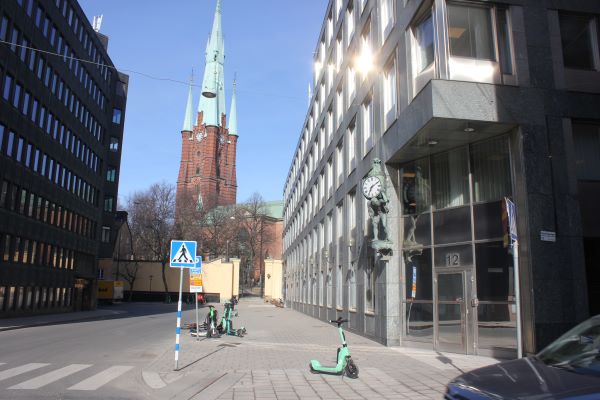
Lenin no longer trusts Comrade Branting, who skillfully defends the proletarian revolution.
In the other direction, towards the south, you can see Karduansgatan, where Svenska Dagbladet was located.

Vattugatan/Klara Östra Kyrkogata
Perhaps Lenin glanced at Klara Östra Kyrkogata during his walk up Vattugatan. Because it was there at the Hotel Bristol that the Georgian Josef Stalin stayed in April 1906, where he established a lifelong friendship with the Ukrainian Kliment Voroshilov. Certainly cheap accommodation, but the hotel was known for prostitution. The house with house number 5 was demolished in the 1960s.
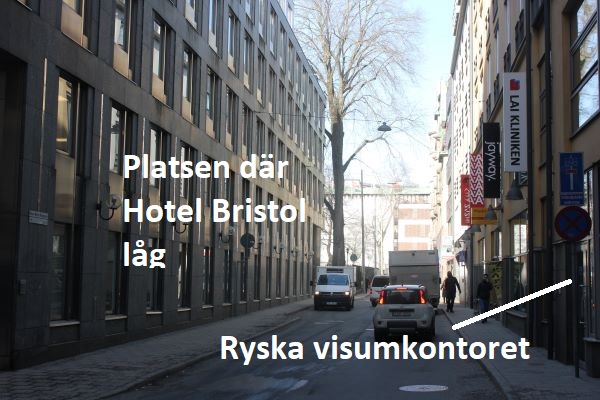
He and Stalin participated in the Socialist World Congress in Stockholm’s People’s House, together with Hjalmar Branting, among others. The 90-person delegation included Vladimir Lenin, or Vladimir Ilyich Ulyanov as he was then called.
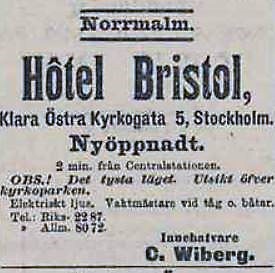
In the Stockholm police interrogation , Stalin stated that he was born in 1879 in Tiflis and was named Ivan Ivanovitz Visarionovitz, Caucasus. Stalin’s real name was Iosif Dzhugashvili. He stated that he was a political refugee and a journalist for the newspaper Demokratiska Konstitutia.
Lenin was also interrogated. He said he had fled Moscow, wanted by the police and at risk of being sent to Siberia. Lenin then visited Stockholm in 1907 and 1910, so he knew about the Klarakvarteren.
Stalin made a poor showing at the People’s House. His speeches were poor and he was narrowly defeated by Lenin.
Queen’s Palace Hotel Regina
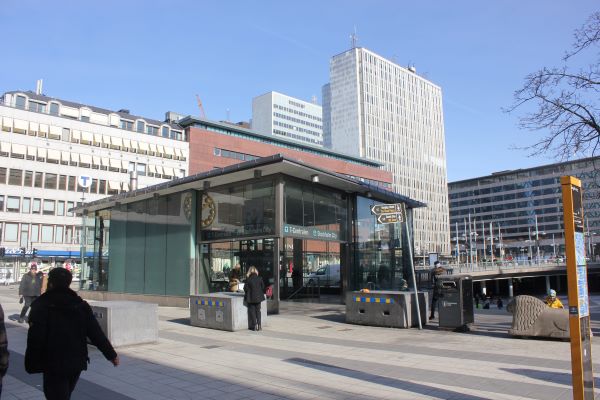
The Russians’ walk continued to Drottninggatan. Fredrik Ström had rented ten rooms at Hotel Regina . It was newly built in Art Nouveau style, which attracted with luxury and bowling alleys. It was demolished in 1962 and replaced with a T-shaped entrance in the northwest corner of Sergels torg.
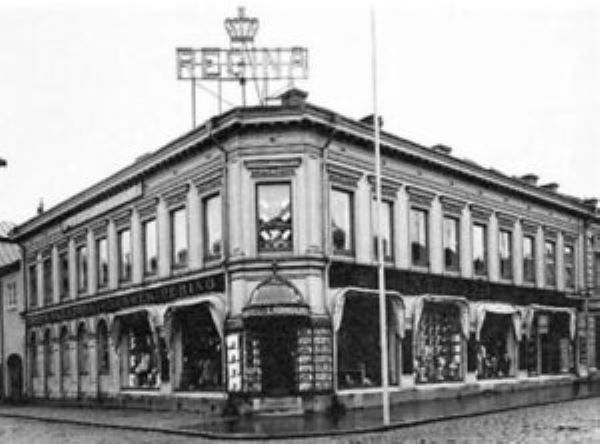
Lenin’s visit is surrounded by anecdotes, more or less plausible. One is that the doorman refused to let the party in because of their ostentatious attire. Fredrik Ström, who had ordered the ten rooms, paid for the stay in advance.

After breakfast, Lenin met with Russian emigrants. Then he wanted to visit his old acquaintance Zeth Höglund on Långholmen. Which was not enough to be managed.
DN 14 April tells of the four-hour conference Lenin had with his Swedish party friends. He and his confidants discussed the revolution with Ture Nerman, Fredrik Ström and Karl Kihlbom , who was the editor of Stormklockan. In May, the three left the Social Democrats and formed the Social Democratic Left Party, later the Communists.
According to Fredrik Ström, Lenin agitated: “The social revolution must implement real freedom and democracy. The proletarian dictatorship means centralization of power but must not abolish democracy… Branting is wiser than you, but his policy is wrong. He is a petty bourgeois, a Menshevik, and believes in the Entente, instead of in the proletariat. But you have the right revolutionary spirit, and geist is more than form and method. History will teach you the right method. History is a damned good teacher .”
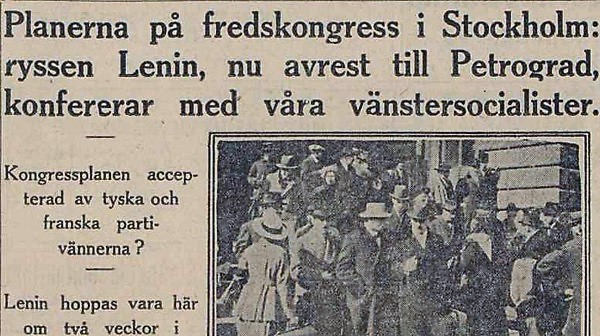
Lenin terrified Branting’s social democrats. One was Baron Erik Palmstierna who failed to convince Branting when he called him with the message ”You know Kerensky [the Russian head of government]. Tell him that Lenin is coming on the next train and must be shot or imprisoned when he crosses the border. ” History could have taken a different turn and Branting could have taken his future foreign minister seriously.
Hötorget
It is said that his traveling companion Karl Radek (executed by Stalin in 1939) made Lenin try on a suit and shoes at Paul U Bergström at Hötorget. But Lenin did not want to buy an overcoat and underwear. With the argument that he was going to Petrograd to make a revolution, not to start a men’s movement.
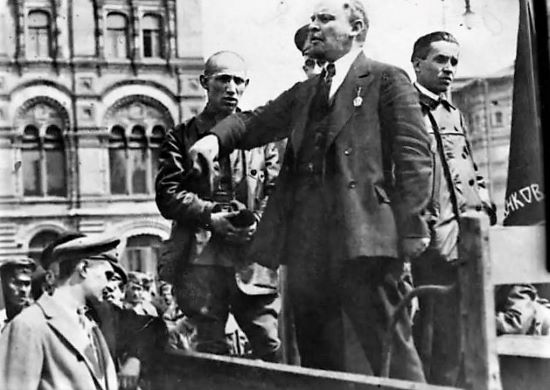
Is Lenin’s visit to PUB true or a legend? Another anecdote says that it was the bookbinder Nils Björkman who was responsible for the purchase at PUB, or Paul U Bergström as the shop was then called. With a body similar to Lenin’s, Björkamn served as a mannequin for the purchase of a suit and a coat with a velvet collar. The outfit is said to have been immortalized in photographs when Lenin arrived in Russia.
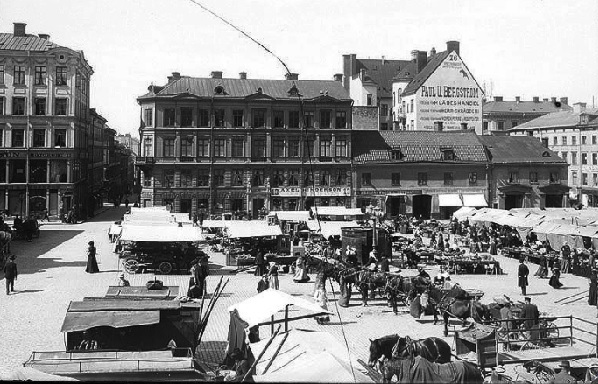
The department store was expanded and got its facade facing Hötorget in 1925. In 1917, only the part closest to Kungsgatan existed. A week before Lenin’s visit, Dagens Nyheter described the premises.
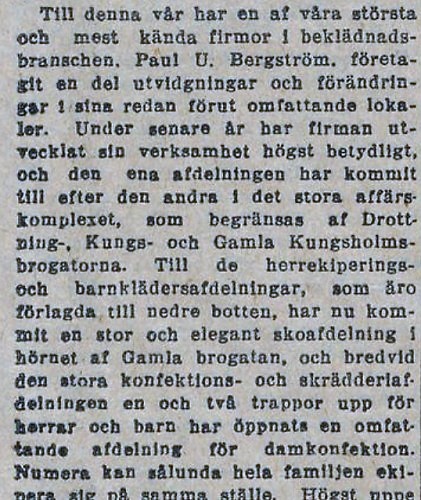
In 1920, Greta Gustafsson was hired at PUB’s hat department. She modeled there and became known as Garbo.
Departure from Stockholm Central
The Russians hurried in the chilly rain that evening down to Stockholm Central, to catch the six-train to Haparanda. They were accompanied by Swedish left-wing friends, where in the lead were seen the member of parliament Fredrik Ström and the journalists Ture Nerman and Otto Grimlund . Spectators on the platform watched Swedes and Russians with revolutionary ribbons in their buttonholes shaking hands. . No Lenin is included in the report from the two police officers on the lookout. However, they said they had seen a man named Vladimir Uljanov.
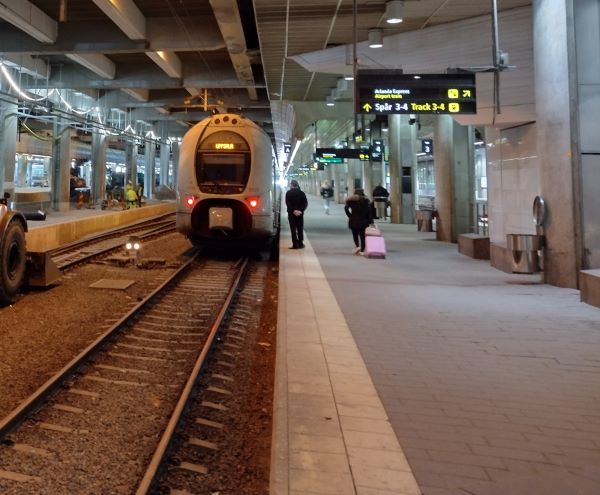
Revolutionary songs could be heard from inside the compartments, windows were opened and the people outside joined in with the International. The Marseillaise fell silent when Lenin appeared in a window and gave a fiery speech in a language that few understood. The farewell was marked by a peculiar atmosphere as the steam locomotive pulled the train away. One of the company remained in Stockholm, the writer Sadek, who, together with the left-wing radical forces, was appointed to arrange a peace conference in Stockholm.

The train arrived in Haparanda early on April 15. A plaque at the station is a reminder. There was a great rush of people and goods, for this was Russia’s breathing space to the west.
The revolutionaries are transported in sledges across the frozen Torne River, which is the border river to Tsarist Finland.
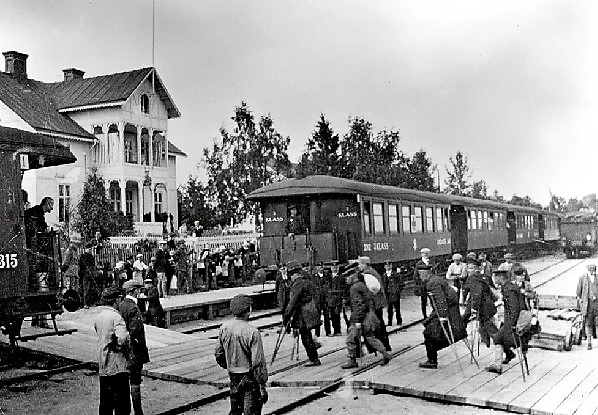
By Ingemar Lindmark
